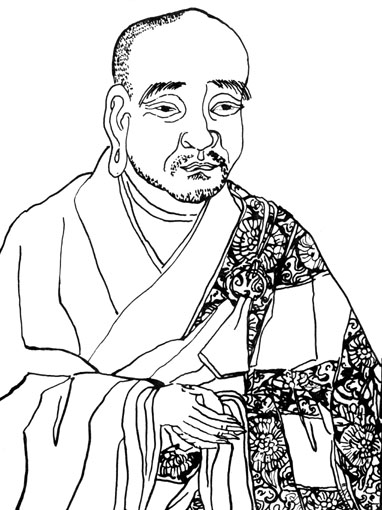SHARE:

Purity of Wisdom.
By virtue of the permeation (vasana, perfuming) of the influence of dharma [i.e., the essence of Mind or original enlightenment], a man comes to truly discipline himself and fulfills all expedient means of unfolding enlightenment; as a result, he breaks through the compound consciousness [i.e., the Storehouse Consciousness that contains both enlightenment and nonenlightenment], puts an end to the manifestation of the stream of deluded mind, and manifests the Dharmakaya [i.e., the essence of Mind], for his wisdom (prajna) becomes genuine and pure.
What is the meaning of this? All modes (lakshana) of mind and consciousness under the state of nonenlightenment are the products of ignorance.
Ignorance does not exist apart from enlightenment; therefore, it cannot be destroyed [because one cannot destroy something which does not really exist], and yet it cannot not be destroyed [insofar as it remains]. This is like the relationship that exists between the water of the ocean [i.e., enlightenment] and its waves [i.e., modes of mind] stirred by the wind [i.e., ignorance].
Water and wind are inseparable; but water is not mobile by nature, and if the wind stops the movement ceases. But the wet nature remains undestroyed. Likewise, man’s Mind, pure in its own nature, is stirred by the wind of ignorance. Both Mind and ignorance have no particular forms of their own and they are inseparable. Yet Mind is not mobile by nature, and if ignorance ceases, then the continuity of deluded activities ceases. But the essential nature of wisdom [i.e., the essence of Mind, like the wet nature of the water] remains undestroyed.
Attributed to Asvaghosha
Translated by Yoshito S. Hakedas
Copyright 1967 Columbia University Press
Sự tinh khiết của Trí tuệ
Nhờ sự thẩm thấu (vasana, perfuming) ảnh hưởng của pháp [tức là bản chất của Tâm thức hay sự giác ngộ ban đầu], một người thực sự tự kỷ luật bản thân và thực hiện tất cả các phương tiện cần thiết để mở ra giác ngộ; kết quả là, vị ấy phá vỡ ý thức hợp chất [tức là Ý thức kho chứa cả giác ngộ và không giác ngộ], chấm dứt sự biểu hiện của dòng tâm thức mê lầm, và hiển thị Pháp thân [tức là bản thể của Tâm], vì trí tuệ (prajna) của anh ta trở nên chân chính và tinh khiết.
Ý nghĩa của việc này là gì? Tất cả các chế độ (lakshana) của tâm và thức dưới trạng thái không giác ngộ đều là sản phẩm của vô minh.
Vô minh không tồn tại ngoài giác ngộ; do đó, nó không thể bị phá hủy [bởi vì người ta không thể phá hủy một cái gì đó không thực sự tồn tại], và nó cũng không thể bị phá hủy [trong chừng mực nó vẫn còn]. Điều này giống như mối quan hệ tồn tại giữa nước của đại dương [tức là giác ngộ] và sóng của nó [tức là các chế độ của tâm trí] bị khuấy động bởi gió [tức là, vô minh].
Nước và gió không thể tách rời; nhưng bản chất nước không di động, và nếu gió dừng thì chuyển động sẽ không còn nữa. Nhưng bản chất ẩm ướt vẫn không bị phá hủy. Tương tự như vậy, Tâm trí của con người, tự bản chất thuần khiết của nó, bị khuấy động bởi cơn gió của sự vô minh. Cả Tâm trí và Vô minh đều không có hình thức cụ thể của riêng chúng và chúng không thể tách rời. Tuy nhiên, tâm trí không di động theo bản chất, và nếu vô minh chấm dứt, thì sự liên tục của các hoạt động si mê sẽ chấm dứt. Nhưng bản chất cốt yếu của trí tuệ [tức là bản chất của Tâm trí, giống như bản chất ẩm ướt của nước] vẫn không bị phá hủy.
Được cho là Asvaghosha
Bản dịch của Yoshito S. Hakedas
Bản quyền năm 1967 Nhà xuất bản Đại học Columbia
SHARE:

Ban biên tập website Thiện Tri Thức chúng tôi chân thành cám ơn các trang mạng, các tác giả cùng những cộng tác viên , các bạn đọc đã cho phép chúng tôi trích đăng và gửi bài tới trang nhà chúng tôi. Những ý kiến đóng góp và bài viết xin gửi về email [email protected].
Mong mọi sự tốt lành!
© Bản quyền 2021 THIỆN TRI THỨC | Thiết kế bởi TIGONSYS